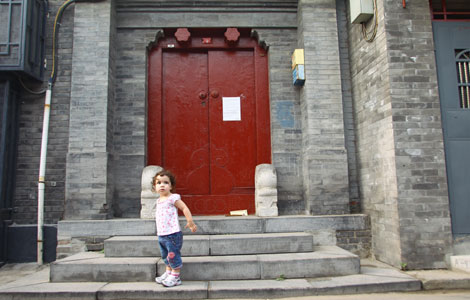World Heritage status sought for corridor
Updated: 2013-09-11 08:11
By Zhang Zixuan (China Daily)
|
||||||||
In August, a team of 20 cyclists from Kazakhstan, Kyrgyzstan and Uzbekistan departed from Xi'an, Shaanxi province, to traverse the ancient Silk Road.
The journey took them to many Chinese cities before they arrived at their destination, Kazakhstan's Masanchi, where the Dungan people - a branch of China's Hui ethnic group - settled after emigrating from China more than a century ago.
From Sept 14 to Dec 8, more than 70 Buddhist cultural relics excavated along the Silk Road in Shaanxi province, Gansu province and the Xinjiang Uygur autonomous region will be exhibited at the Fo Guang Shan Buddha Memorial Center in Kaohsiung, Taiwan.
These are two of many events in support of a bid to nominate the "Silk Roads: Initial Section and Network of Routes of Tian-shan Corridor" for next year's World Heritage List, as proposed by China, Kazakhstan and Kyrgyzstan.
"We will be very happy if our exhibition can promote and build momentum for the nomination," said Yao An, deputy director of Art Exhibitions China, the organizing institution of the Buddhist relics exhibition.
The Silk Road is an overland commercial route that connected countries on the ancient landmass of Eurasia from the 2nd century BC to the 16th century AD.
The Silk Road has played a role in promoting economic and cultural exchanges between East and West as well as building friendship between China and the rest of Eurasia.
Since 2006, the UNESCO World Heritage Center has promoted the transnational World Heritage Nomination of the Silk Road. This is the first transboundary World Heritage Nomination that China has shared with other countries.
In 2007, China, Kazakhstan, Kyrgyzstan, Tajikistan, Uzbekistan and Turkmenistan signed a concept paper addressing the World Heritage application at the UNESCO Headquarters in Paris.
The project has attracted up to 12 participant countries, and some 50 potential Silk Road Heritage Corridors have been identified, of which 20 are considered a medium priority.
The initial section of the Silk Road and the Routes Network of Tian-shan Corridor in China, Kazakhstan and Kyrgyzstan, are top priorities.
The application will be submitted to next year's 38th World Heritage Convention in Doha, Qatar. If it succeeds, it will be the first World Heritage inscription from the transnational Silk Road Nominations.
There are 33 tentative sites along the corridor, of which 22 are in China, eight in Kazakhstan and three in Kyrgyzstan.
International Council on Monuments and Sites President Gustavo Araoz said: "It's important that China - like so many other countries in Asia - integrates its physical cultural sites with its intangible cultural traditions, realizing that one cannot exist without the other and giving each mutual meaning. That's something the entire world can learn from China."
China's State Administration of Cultural Heritage said that if the cultural route is successfully inscribed, it will significantly improve the capacity for heritage preservation.
zhangzixuan@chinadaily.com.cn
(China Daily USA 09/11/2013 page4)
Most Viewed
Editor's Picks

|

|

|

|

|

|
Today's Top News
China's economy stable: Davos founder
Russia proposal likely to avert US air strikes
China's Hawaii goes fishing for talent
IPO to land deals in Hollywood
Timetable not set for Six-Party Talks
Li plots the economic course ahead
New iPhones a dud in China, so far
Kerry to meet Russian counterparts over Syria
US Weekly

|

|














